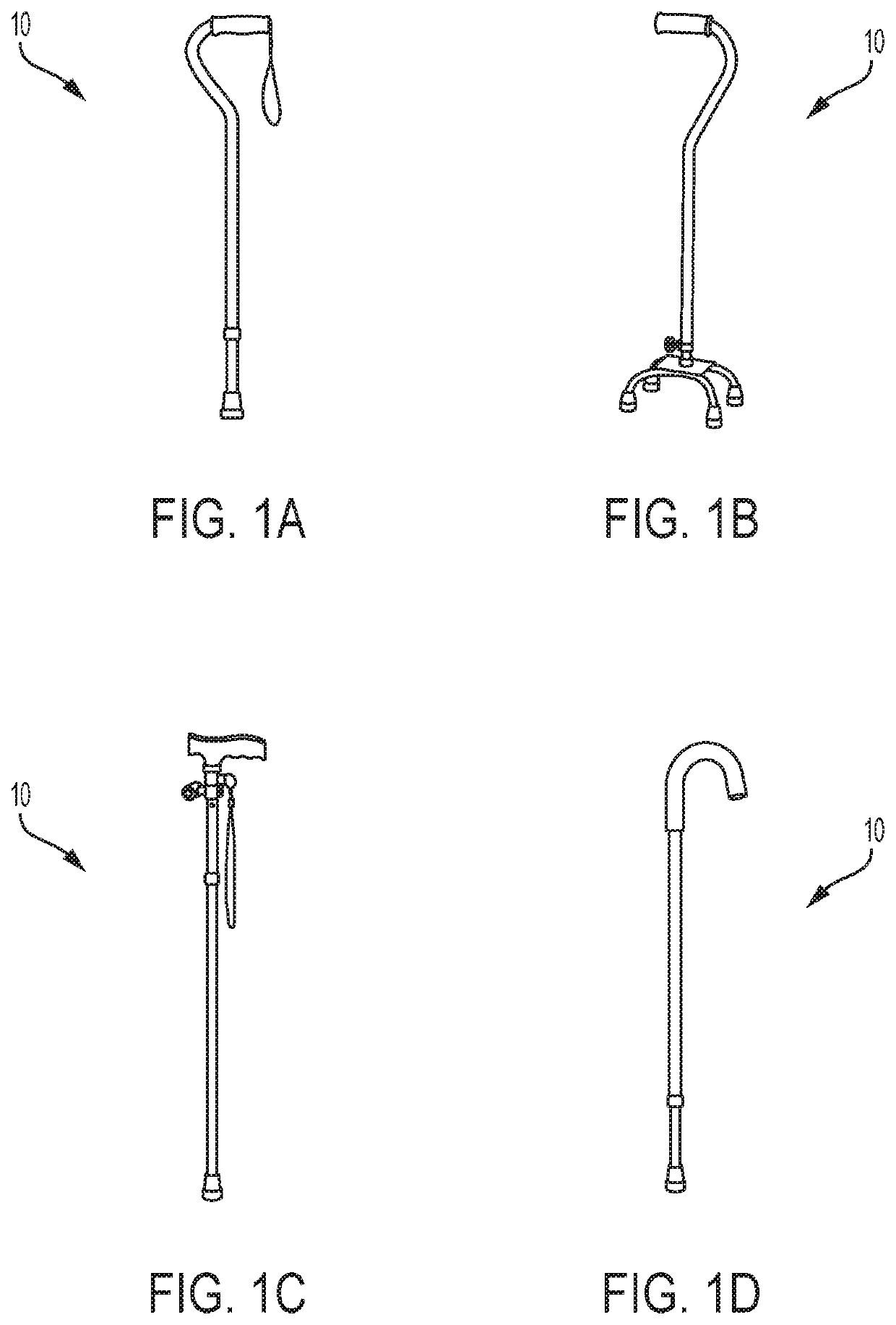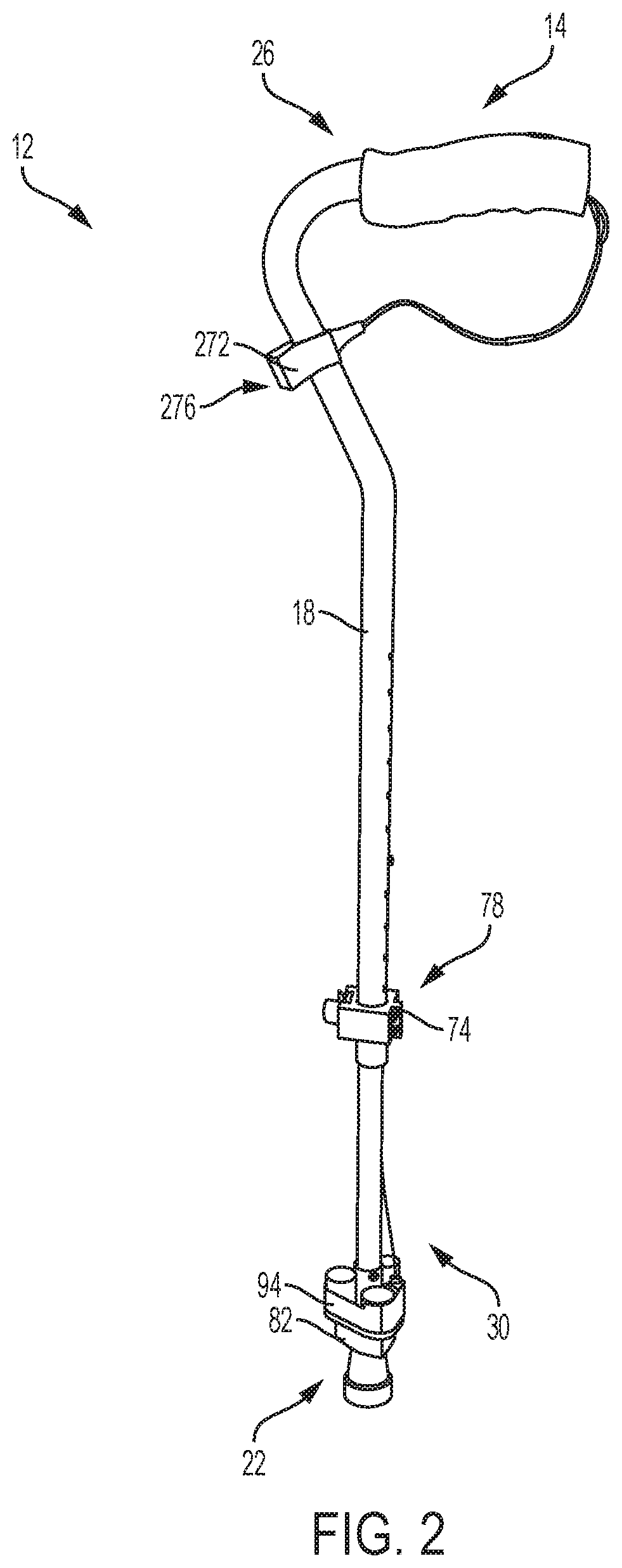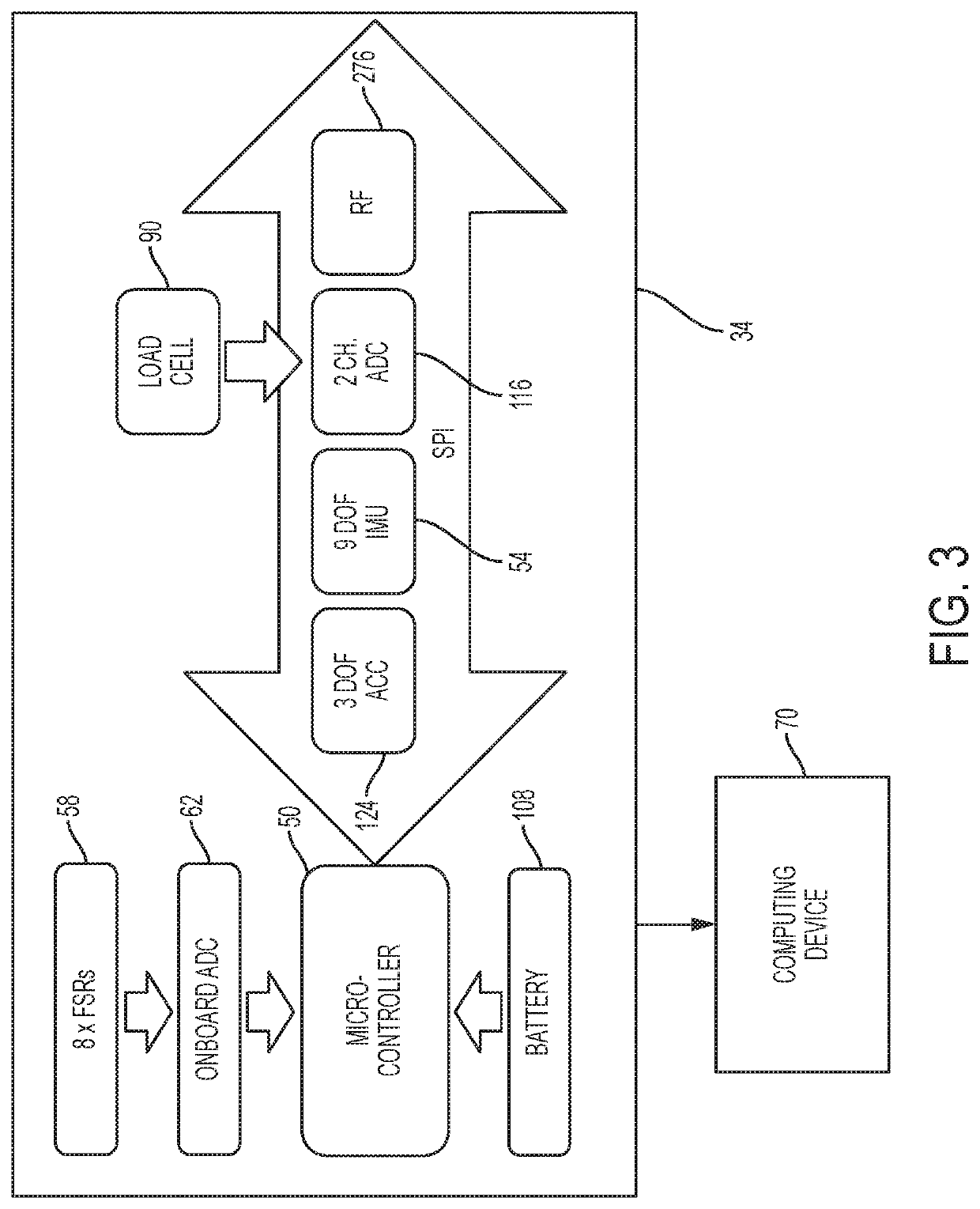Walking aid and system and method of gait monitoring
a technology of gait monitoring and walking aid, applied in the field of walking aid and system and method of gait monitoring, can solve the problems of traumatic brain injury, death, and huge annual medical cost of $34 billion, and existing methods do not provide quantitative data to characterize the use of mobility devices, so as to facilitate appropriate prescription of assistive gait devices, facilitate observation-based gait assessment, and reduce wrist and shoulder injuries
- Summary
- Abstract
- Description
- Claims
- Application Information
AI Technical Summary
Benefits of technology
Problems solved by technology
Method used
Image
Examples
example
[0093]The system is being evaluated with mobility-impaired patients at the Pi Beta Phi Rehabilitation Institute at the Vanderbilt University Medical Center. A preliminary study is underway in which cane usage data is being collected from three distinct groups: controls (non-patients), mobility-impaired patients at high risk for falls, and mobility-impaired patients at low risk for falls. Prior fall risk is decided based on past performance on either the DGI or FGA indices. All subjects completed either the DGI or FGA (depending on past evaluation) during the experimental session. All subjects were 60 years of age or older at the time of the session. This preliminary study has been approved by Vanderbilt University's Institutional Review Board (IRB).
[0094]As of this writing, six subjects have completed the experimental session. Thus, only descriptive statistics are presented in Tables 9, 10, and 11. The data shown in these tables are representative of the three major types of sensor ...
PUM
| Property | Measurement | Unit |
|---|---|---|
| mass | aaaaa | aaaaa |
| mass | aaaaa | aaaaa |
| length | aaaaa | aaaaa |
Abstract
Description
Claims
Application Information
 Login to View More
Login to View More - R&D
- Intellectual Property
- Life Sciences
- Materials
- Tech Scout
- Unparalleled Data Quality
- Higher Quality Content
- 60% Fewer Hallucinations
Browse by: Latest US Patents, China's latest patents, Technical Efficacy Thesaurus, Application Domain, Technology Topic, Popular Technical Reports.
© 2025 PatSnap. All rights reserved.Legal|Privacy policy|Modern Slavery Act Transparency Statement|Sitemap|About US| Contact US: help@patsnap.com



